
|
|
|
|
BY: SUN STAFF
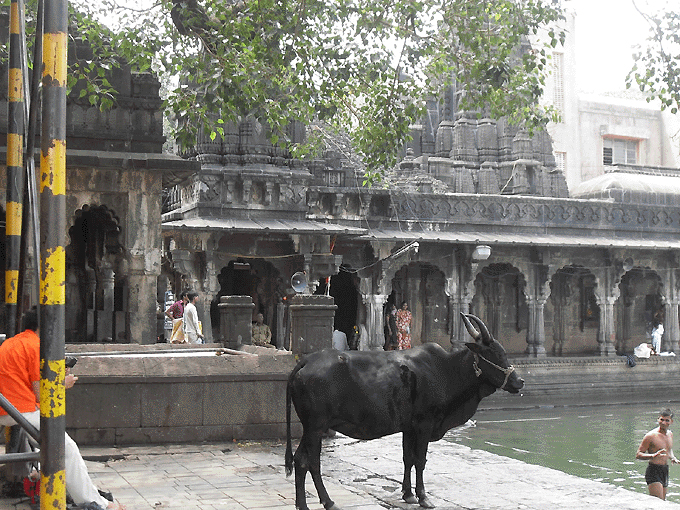
Kusavartakunda Mar 01, CANADA (SUN) — A serial exploration of the holy sites visited by Lord Caitanya. Kusavarta
Today we follow Lord Caitanya's tirtha-yatra to the holy site of Kusavarta, at Nasik in Maharashtra state. Kusavarta is the source of the holy Godavari River, and there are many transcendental aspects associated with this place. The location of Kusavarta is established by Srila Bhaktivinoda Thakur in his summary narrative on Sri Caitanya-caritamrta Madhya Lila 9:
Madhya Lila 9 Summary "He entered Dandakaranya and liberated the seven palm trees. From there He visited a place known as Pampa-sarovara and visited Pancavati, Nasika, Brahmagiri and also the source of the Godavari River, Kusavarta. Thus the Lord visited almost all the holy places in South India. He finally returned to Jagannatha Puri by taking the same route, after visiting Vidyanagara again." Later, in Madhya 9.317, we get further details on this tirtha: Madhya 9.317
SYNONYMS TRANSLATION PURPORT
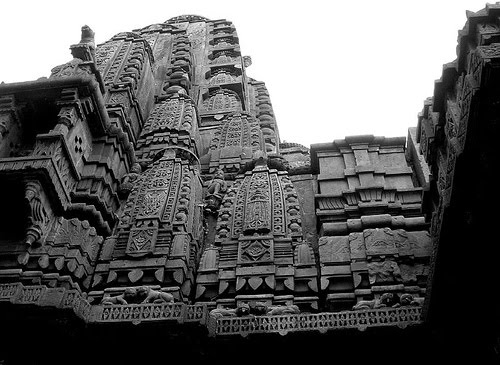
Triambakeswar Temple Although Srila Prabhupada informs us that there is some controversy about the location of Kusavarta, all the sources we've identified agree that it is located at Nasik. In Madhya 9.318, we read about the Lord's subsequent travels to the nearby region of northern Hyderabad state: Madhya 9.318 "In this way Sri Caitanya Mahaprabhu traveled from the source of the Godavari River and eventually visited the northern side of Hyderabad state. He finally arrived at the state of Kalinga." In our series on the places of Lord Brahma's worship, we covered the temple of Triyambakeshwar, one of the twelve Jyotirlingas. The presiding Deity there has three faces embodying Lord Brahma, Lord Vishnu and Lord Rudra. Because all the Jyotirlingas have Shiva as their main deity, Srila Prabhupada clearly states in Madhya 9.317 that at Nasika, the Deity visited by Lord Caitanya was Tryambaka, the name of Lord Shiva. Additional information about Lord Brahma's embodiment in this Trimurti Deity can be found here: Lord Brahma – Trimurti at Trimbakeshwar". Triyambakeshwar Temple at Nasik (Nasika) is a black stone structure in the foothills, framed against the Brahmagiri Mountain. Srila Prabhupada states in his purport above that Kusavarta, the source of the river Godavari, is located in the Western Ghats, at Sahyadri. The Brahmagiri is part of the Western Ghats, which run for a great distance, parallel to India's west coast. The Western Ghats range is also known as Sahyadri, or the Sahya Mountains.
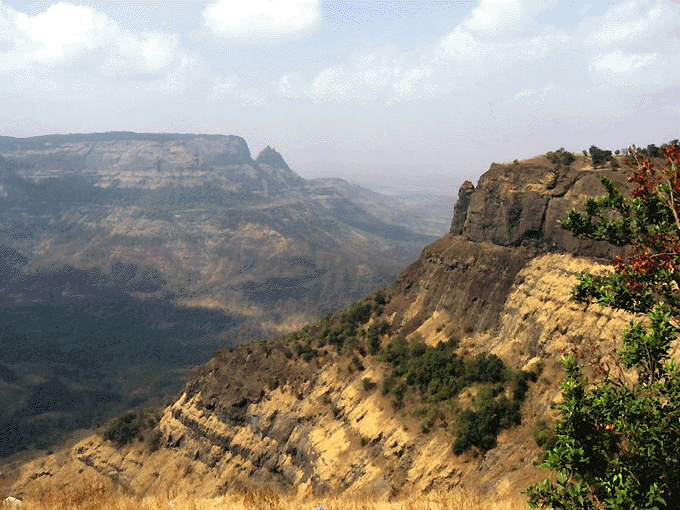
The Western Ghats at Matheran, near Mumbai The Sahyadri range starts near the border of Gujarat and Maharashtra, south of the River Tapti, and runs approximately 1,600 km through Maharashtra, Goa, Karnataka, Tamil Nadu and Kerala, ending at the southern tip of India, in Kanyakumari. About sixty percent of the Western Ghats are located in the state of Karnataka, and we have seen pictures of several tirthas Lord Caitanya visited along these Ghats, mostly in the south. Kusavarta, however, is at the northernmost end of the Ghats. Nasik is located approximately 170 kilometers northeast of Mumbai, and as the picture above shows, the environment there is very different from the lush green Ghats in Karnataka. Trimbakeshwar Temple is about 33 km west of Nasik, near the Brahmagiri Mountain, from which the Godavari flows. Kusavarta itself is the symbolic place of origin of the Godavari, and there is a very famous kunda there, the Kusavartakunda. The center of the kunda is extremely deep. The kund is said to have been originally constructed by Gautama Muni out of Kusa grass. Another legend states that Sage Gautama lived on the Brahmagiri hills at Triambakeshwar along with his wife, Ahalya. The rishi kept his stock of rice stored in a nearby granary. Once a cow entered his granary and ate up the rice. When Gautama tried to wave the cow away with Durbha grass, it fell dead. Wishing to purify himself of the sin of gohatya, Gautama worshipped Lord Shiva and asked him to bring the Ganga to purify his hermitage. Lord Shiva, being pleased with the rishi, manifested at Triambaka and brought with him the River Ganga. In honor of Sage Gautama, Ganga is known here as Gautami as well as Godavari.
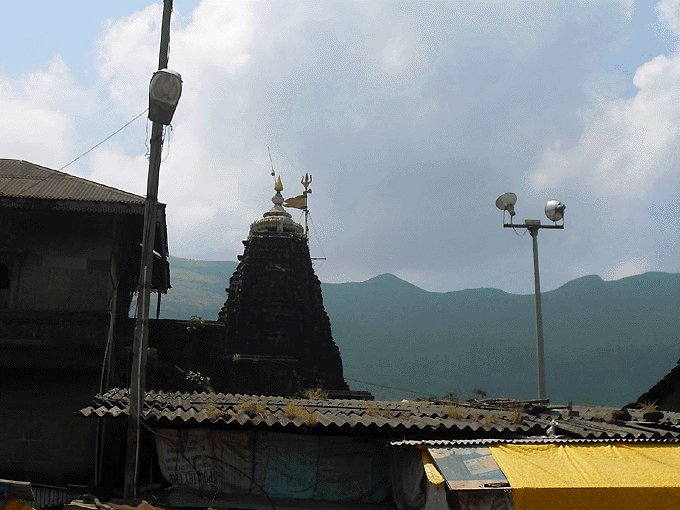
Kusavartakunda and Brahmagiri Hills Like Caitanya Mahaprabhu, Lord Balarama also visited this place, bathing in the Godavari some 5,000 years ago, as the battle of Kurukshetra was commencing. Near Kusavarta is the place where Jatayu, the great devotee bird valiantly fought to keep Ravana from kidnapping Sita, only to lose his life as a result. Srila Prabhupada mentioned in his purport to Madhya 9.317 that according to some, Kusavartra was situated in the valley of Vindhya. The Vindhya Range is an older mountain range in the west-central subcontinent, where it geographically separates northern India (the Indo-Gangetic plain) from Southern India. The western end of the Vindhya range is in Gujarat state, east of the Gujarat peninsula and near the border of Rajasthan and Madhya Pradesh. Reaching the sub-continent proper, the Vindhya range runs east and north almost to the Ganges at Mirzapur. These coordinates would appear to put Kusavarta somewhat north of the Godavari River. We should also note that there is a well known Kusavarta in the area of Haridwar. It is one of five sacred bathing spots: Gangadwara, Kankhal, Nila Parvata, Bilwa Theertha and Kusavarta.
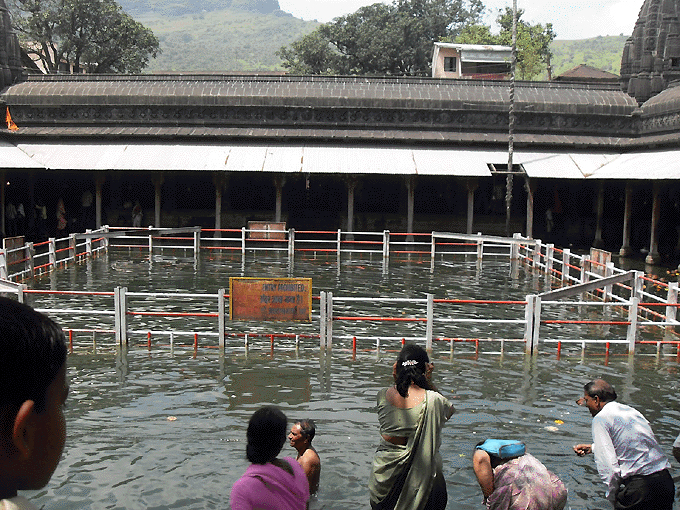
Kusavartakunda Mahaprabhu's Acceptance of Nauroji Although little additional information is found in Caitanya-caritamrta on Lord Caitanya's pastimes at Kusavarta, an interesting narrative has been given by HH Srila Bhakti Sravan Tirtha Goswami, who belongs to another branch of the Gaudiya Vaisnava tree. He provides the following description of Lord Caitanya's pastimes at Nasik, and in particular, His acceptance of the dacoit Nauroji as His disciple. "After delivering the women at the Khandoba temple, Mahaprabhu moved ahead. On the way, a jungle called Chochanandi had to be crossed. When Mahaprabhu entered the jungle, the people warned him of the dacoits there who looted anyone who went into the jungle. They said that the dacoit's leader was known as Nauroji and whoever dared to cross the jungle was looted by him. Mahaprabhu replied to all these things saying, "Look, I am a beggar who lives on alms and the dacoits cannot loot anything from me." Saying this, Mahaprabhu entered the jungle and sat under a tree and started singing songs of Krishna. Hearing the songs, the dacoits' chief, Nauroji came to the spot and surrounded Mahaprabhu with his men. As he gazed on Mahaprabhu's divine person, a profound change came over him. Hearing Mahaprabhu's singing, Nauroji became intoxicated and felt very pleased. He asked Mahaprabhu to have food with him. Mahaprabhu politely agreed. After having food, Mahaprabhu again started singing songs of Krishna. His voice and lustrous face eluded and attracted Nauroji. His heart melted seeing the love and devotion in Mahaprabhu's eyes. He fell down at Mahaprabhu's feet and asked to take him as a disciple. He also vowed to take his mind away from violence and bloodshed forever and lead a peaceful life of an ascetic. He exclaimed, "Although I am born in a Brahmin family I have always inflicted violence and pain on others right from childhood. But just at the sight of you, there has been a great transformation in me. I want to renounce violence. My first and foremost wish is to remain at your feet forever. Please take me unto your feet. Oblige me by giving refuge at your feet." Hearing the dacoit chief's prayer, Mahaprabhu praised his good fortune that all these thoughts had come to him at least in his old age. He said, "Only the name of Lord Krishna is the gist of the whole cosmic creation because everything else are all destructible. Please do not be perturbed even to the slightest extent. Lord Krishna himself had said that no matter how bad a person is, if he chanted Krishna's name, he should be considered as a saint. Krishna has blessed you with good thoughts and that is why you are on the right path. From now on, keep on chanting the name of Krishna." In this way, Mahaprabhu accepted Nauroji as his disciple. The next morning, Mahaprabhu was ready to continue the journey. Nauroji expressed a desire to accompany Him. Many disciples had wished to be with Mahaprabhu but He didn't agree. Nauroji was the only person who was allowed by Mahaprabhu to be with Him. From there on, Mahaprabhu with his two disciples, Govind Das and Nauroji traveled and reached Nasik. From Nasik, they came to Baroda. The king of Baroda had built a beautiful temple for Lord Krishna's temple in his city and Mahaprabhu paid a visit. Blissfully He kept looking at the deity in the temple. The king of Baroda gave Mahaprabhu a grand welcome, befitting his stature and showed great respect for him. He intended to give gifts and valuables to Mahaprabhu. But being an sannyasi, Mahaprabhu could not accept the gifts. So he politely declined the gifts from the king. At Baroda itself, Nauroji breathed his last. Mahaprabhu performed all the last rites of Nauroji as if he were his blood brother. Continuing his journey Mahaprabhu reached Ahmedabad. At Ahmedabad, Mahaprabhu met two disciples from Bengal who talked about Navadwip. As he heard about his hometown, he slipped into the sweet memories of his childhood and youth. Proceeding forward, Mahaprabhu reached Dwarka. After having darshan of Dwarkadheesh, he traveled along the sea in the region of Prabhas and came to Somnath and visited Mahadev's Temple. Traveling through all the pilgrim spots, Mahaprabhu eventually felt like returning to Jagannath Puri. So with this in mind, he traveled along the rivers and reached Vidyanagar."
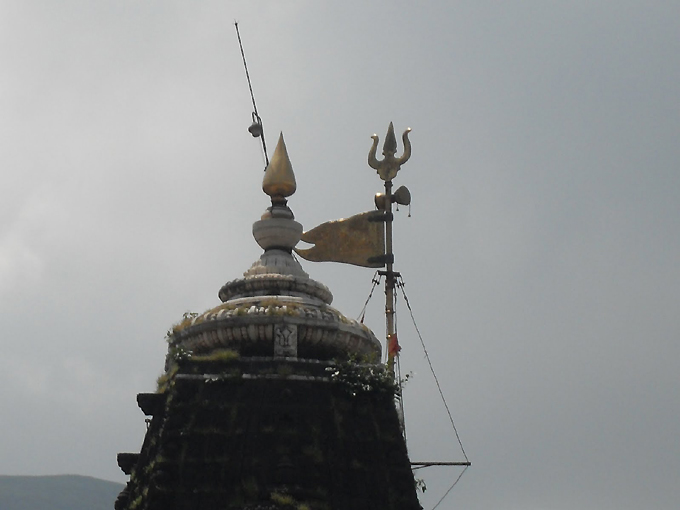
Kusavartakunda Vimana
| |